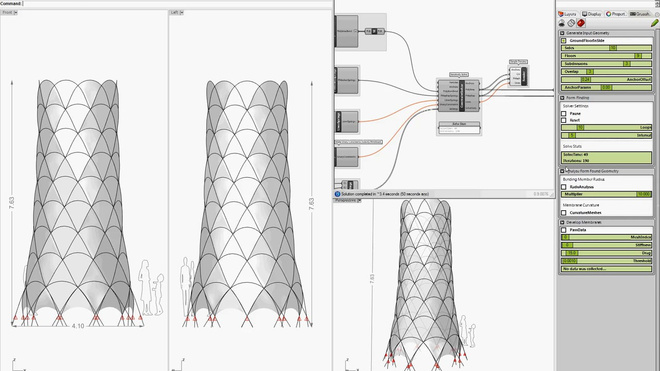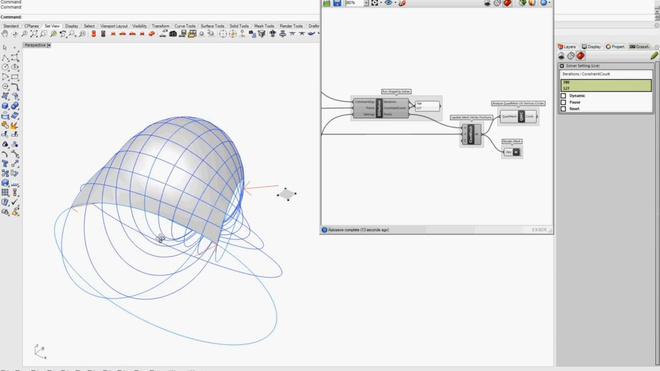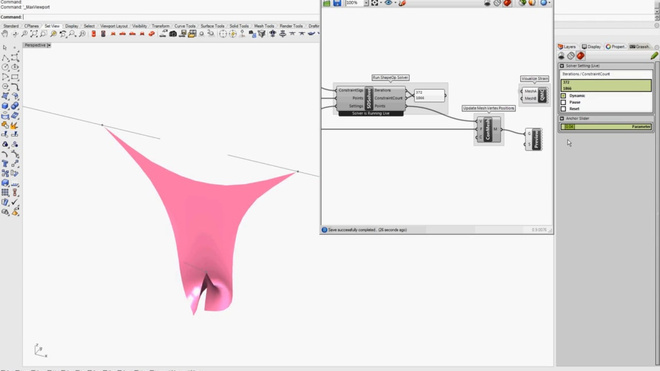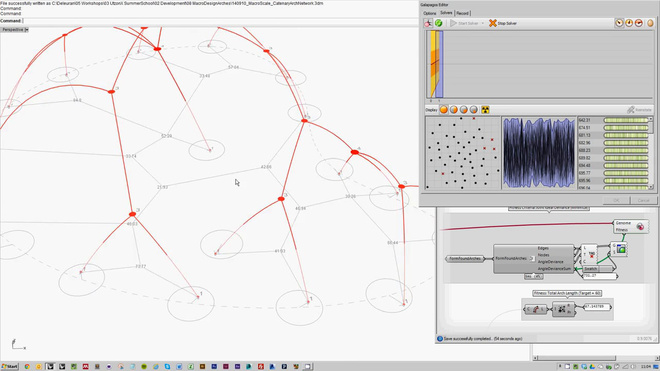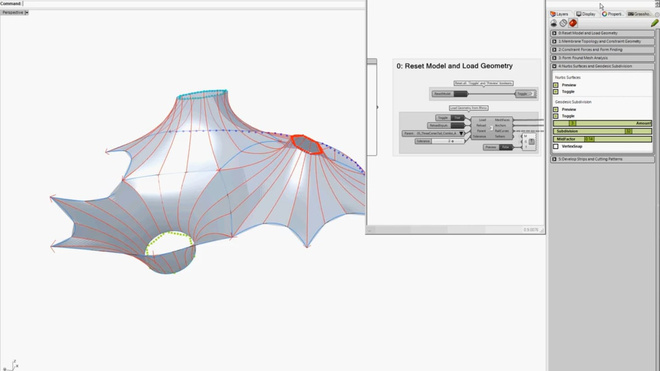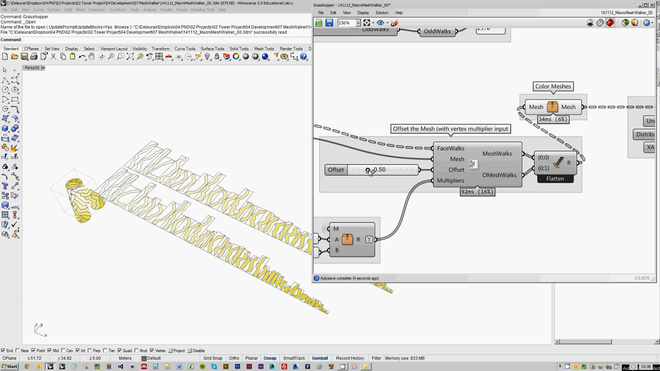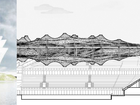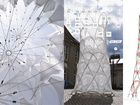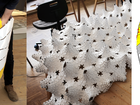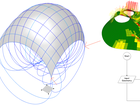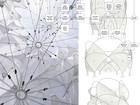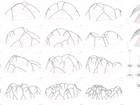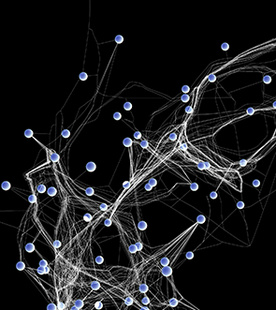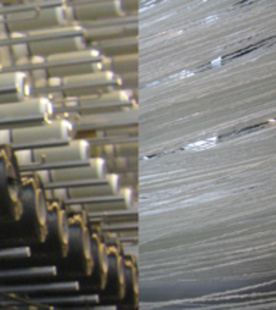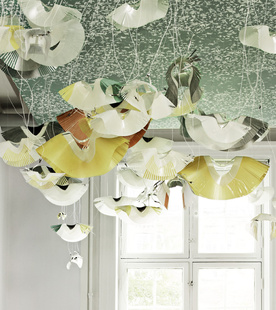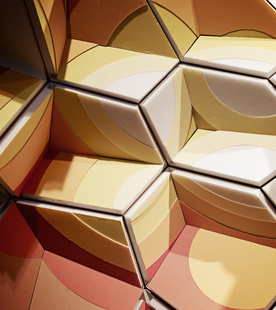Anders Holden Deleuran: Making Architecture Machines - Integrative development in nonlinear computational design modelling
The project examines how architects and engineers develop and integrate computational design models as a part of an interdisciplinary and collaborative design practice.
It is situated within the overarching CITA research project “Complex Modelling in Architectural Design” and is carried out in close collaboration with a network of researchers and practitioners across Europe. Notably the Computer Graphics and Geometry Laboratory (LGG) at EPFL, Lausanne and the Department for Structural Design and Technology (KET) at UDK, Berlin. The PhD project identifies two principal research topics for which it aims to contribute new knowledge.
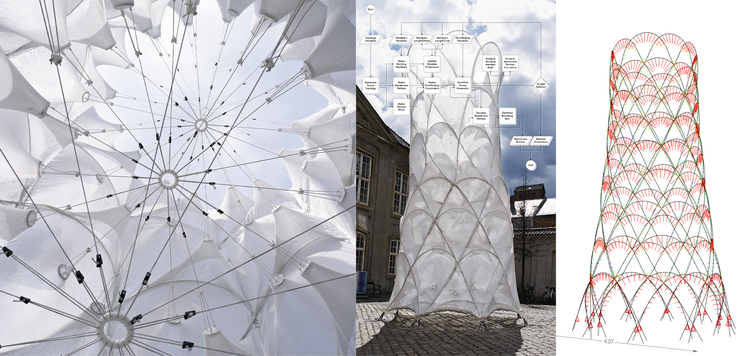
Nonlinear Modelling
The increasing need for interfacing multiple heterogeneous computational models in pipelines characterized by nonlinear dataflow. This topic builds on the hypothesis that design problems typically require not just one computational design model, but several different types of models that are networked in larger pipelines with models performing different tasks and feeding data back and forth between each other.
Certain modelling problems furthermore require pipelines to support feedback loops, meaning that they must support cyclic or bidirectional propagation of data in the modelling pipeline. This is currently not a common feature in the native functionality of software environments used in computational design and thus calls for special attention. The concept of nonlinear modelling is identified here as a special case of computational design modelling with an increased complexity as compared to the linear dataflow characteristic of conventional parametric models.
Integrative Development
The role of formalized development practices as a potentially essential factor in design processes which integrate computational design modelling. This topic builds on the hypothesis that the need for bespoke and nonlinear computational design models will continue to increase in both scope and complexity and that this tendency necessitates better and more structured approaches to the process of developing these models, than what is currently employed in the fields of architectural and engineering design.
This implies a thematic link to process and project management, as well as what can be described as a form of meta-design research in which the object of inquiry is the design and integration of the model rather than the design of the artefact itself. In practice, this involves considering elements such as defining model functionality, implementing external domain knowledge, evaluation criteria and communication of models.
During the course of the PhD, I have and continue to collaborate on projects across the Complex Modelling network. These range from the design, development and construction of a 10-meter tall form-active hybrid tower, to the software design and implementation of a unified geometry-processing framework for optimization under constraints. In these projects teams I act in the role of computational designer.
I am therefore tasked with researching the involved modelling problems and developing computational design modelling pipelines in response to these. In addition to the construction of a conceptual framework forming my theoretical positioning, the primary mode of research practice is to work and reflect on the development of these interdisciplinary projects.
The principal research question asks: How might one establish a conceptual and instrumental framework with the capacity to improve the development and integration of nonlinear computational modelling pipelines in interdisciplinary and collaborative design practices?
Projects
Hybrid Tower
Hybrid Tower (CITA/KET 2014-2015): Developer of computational design modelling pipeline for form finding, analysis and fabrication. Also heavily involved in design detailing and construction of the 10-meter tall bending active membrane hybrid tower. With: Mette Ramsgaard Thomsen, Martin Tamke, Christoph Gengnagel, Michel Schmeck, Ida Katrine Friis Tinning, Gregory Quinn.
ShapeOp
ShapeOp (LGG 2014-2015): GHPython development, component software design and implementation of the unified geometry processing C++ framework for modelling and optimization under constraints. With: Mario Deuss, Bailin Deng, Sofien Bouaziz, Mark Pauly.

Utzon(X)
Utzon(X) Pavilion (AAU 2014): Development of a modelling pipeline for the design and optimization of masonry arch networks in the context of the Utzon(X) summer school. With: David Stasiuk, Isak Worre Foged, Mads Brath.
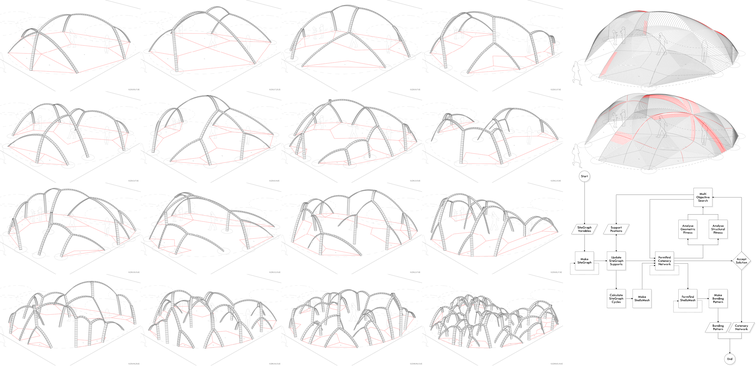
Amphibious Hamburg
Amphibious Hamburg (CITA/AAC/GMP 2014): Developed computational modelling pipelines and tutored for a summer school proposing designs for an aquatic centre for a Hamburg summer Olympics bid. With: Mette Ramsgaard Thomsen, Martin Tamke, David Stasiuk, Enno Maas, Annika Schröder, Johann von Mansberg, Sven Plieninger, Daniel Gebreiter.

Rethinking Patterns
Rethinking Patterns (AA/AARCH 2015): Developer and tutor for the first Architectural Association Visiting School in Denmark, exploring lighting and environmental analysis, mesh decomposition and planar fabrication strategies. With: Jens Pedersen, Dave Reeves, Ali Farzaneh.



